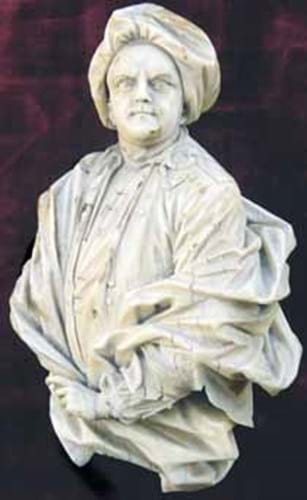
Research by the Oxfordshire auctioneers suggested it could be attributed to Johann Christoph Ludwig Lücke (c.1703-Dresden-1780) and was, perhaps, a likeness of George Frederick Handel. It lacked any provenance beyond its recent unearthing in a local house, but such discoveries only excite the market. Estimated at £6000-8000, it sold to an overseas buyer at £29,000 - a price that pleased auctioneer James Lees more than the £91,000 he had taken earlier in the sale for a trademark Atkinson Grimshaw scene of Glasgow Docks at twilight.
The other major money-spinners in this catalogue were two near-lifesize 19th century Cararra marble figures by Italian neoclassical sculptor Francesco Bienaimé. According to Greg Sullivan of the Victoria and Albert Museum - who helped in the cataloguing - Bienaimé supplied eight statues and two vases to Chatsworth as evidenced in an account book of 1844.
Standing 7ft (2.14m) high on its verde di prato pedestal carved with lion mask and floral swags, was a figure of a bacchante and putto by the trunk of an oak surmounted by the branch of a vine, a toppled wine ewer at their feet. Its companion, 6ft 9in (2.06m) high on a similar pedestal carved with a fish catch, depicted the bacchante carrying a putto on her shoulder, an aegis draped about her and a wreath of fruiting vine in her hair. Each estimated at £8000-12,000, they sold at £15,500 and £12,000 respectively.
Earlier, two 19th century North Country polychrome pearlware equestrian figures were offered. Each standing 10 1/4in (26cm) high on rectangular canted bases, these rare groups were nicely modelled as soldiers holding holster pistols and wearing feathered cocked hats. They sold at £3400 where only £150-200 had been predicted.




